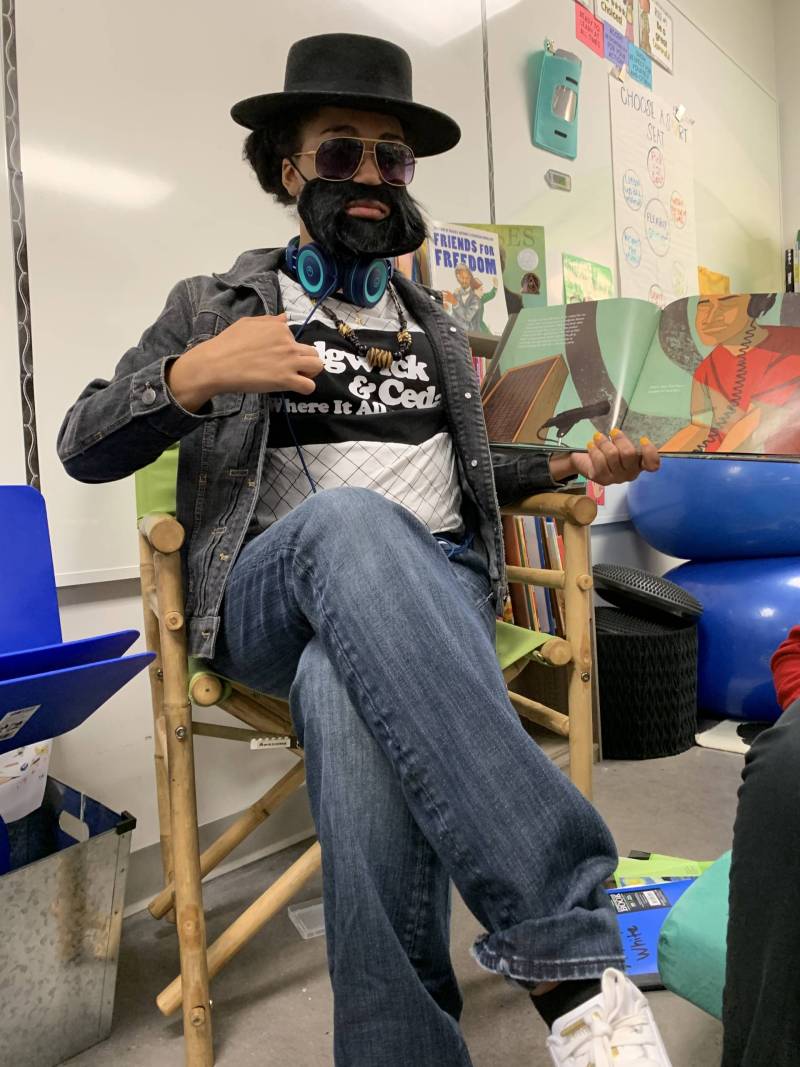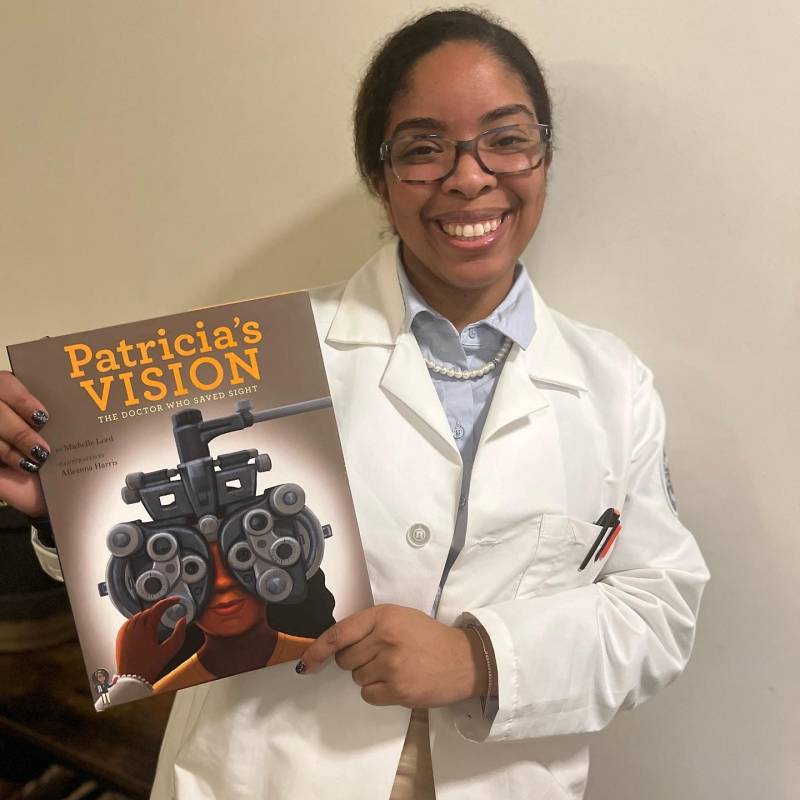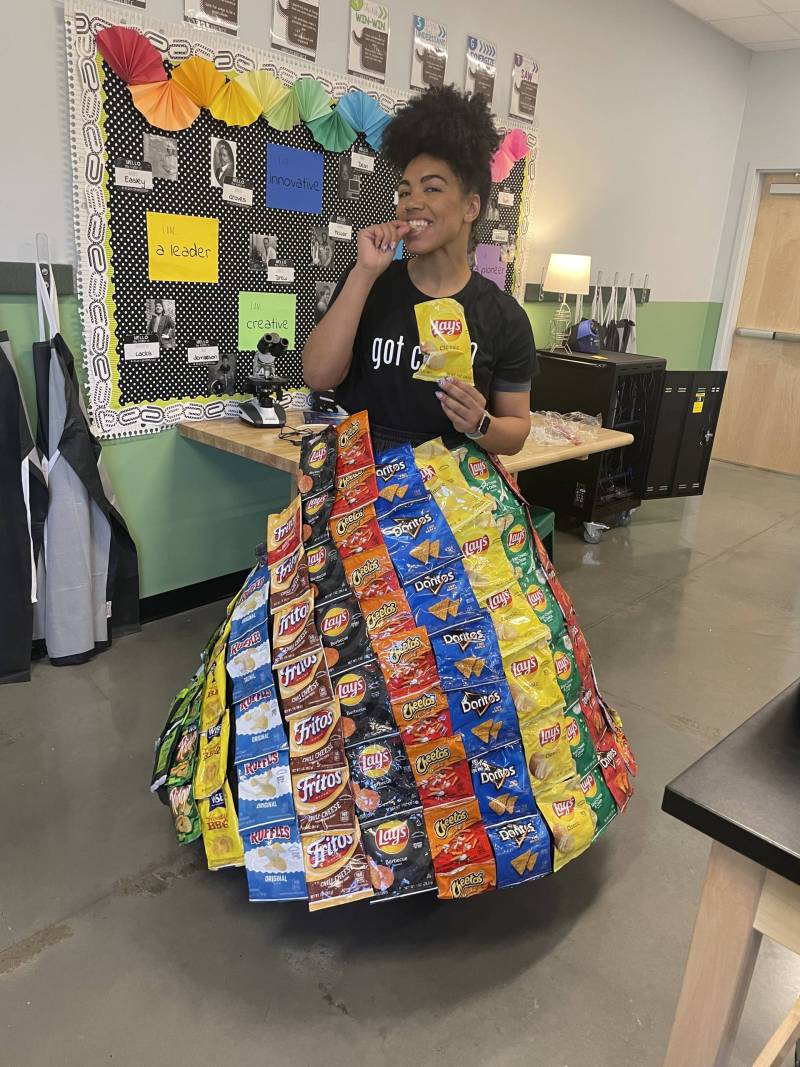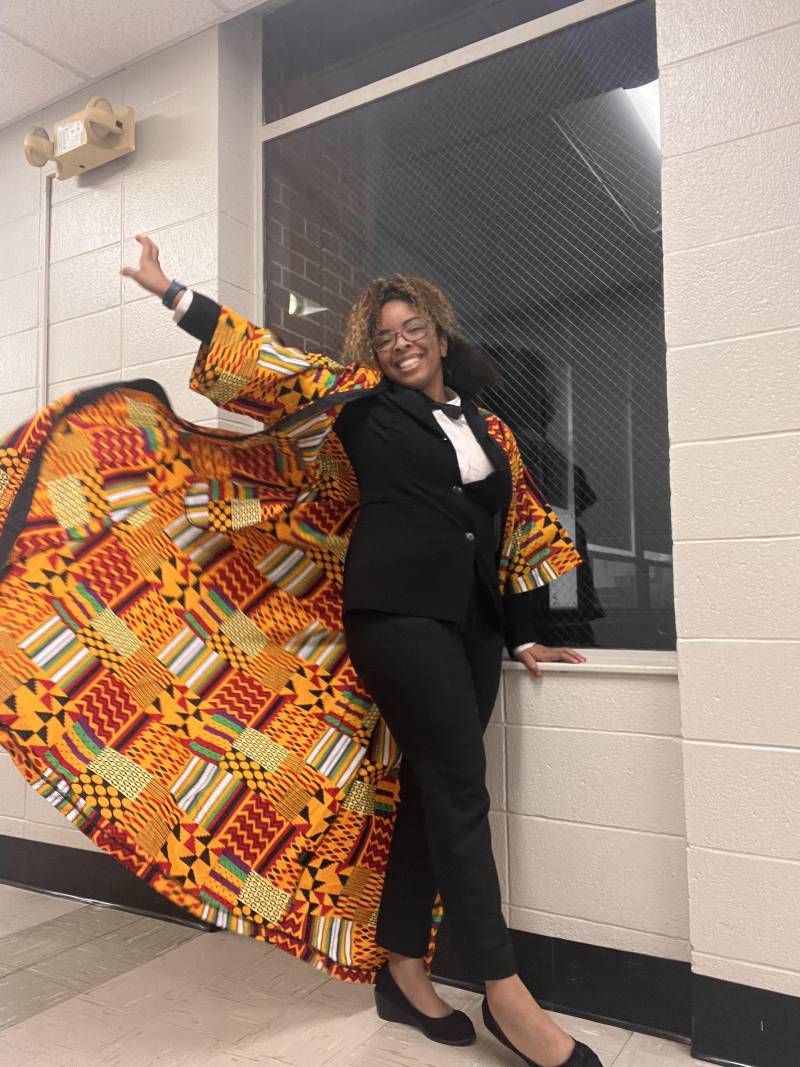On a February morning in 2012, Jazzi Goode, an elementary and middle school STEM educator in North Carolina, was having a hard time getting ready for work. With a closet that seemed devoid of suitable school attire, she surveyed her options: sweatshirts, button downs and lots of jeans. Rather than resigning herself to the ordinary, Goode was struck by an idea that would transform her approach to teaching. “I should dress up as Rosa Parks today,” she thought.
Goode put on a button down white shirt, a gray skirt and even a makeshift “prison tag” number to step into the persona of the iconic civil rights activist. After seeing how her spontaneous decision delighted her students, who listened attentively as they read books and learned about Parks’ role in history, Goode started to dress up as prominent figures more often. “It became an everyday thing,” said Goode, who transitioned out of the classroom to work at an education nonprofit this year. “I started to put more energy into it the following year and it just kept going.” Some years she dressed up every day for the month of February, while other years she dressed up three times a week.
https://www.instagram.com/p/BuhLpjNBczg/?hl=en
Goode eventually inspired third grade teacher Tracey-Ann Lafayette to do the same. “I started [dressing up] because I saw Jazzi do it on Instagram,” said Lafayette, who teaches in Connecticut. She began to dress up once a week so her students could guess who she was and read a relevant book. She continues to dress up for the entirety of Black History and Women’s History Month and use it as a springboard for getting students interested in independent reading and exploring iconic figures in more depth. At the University at Buffalo’s Teaching Black History Conference last summer, Goode and Lafayette shared how teachers can use this powerful blend of education and theatricality to make learning come alive for their students.
Engage students with current events and books
For Goode and Lafayette, dressing up has been a surefire way to spark their students’ fascination with historical figures. “Third graders are just interested in the fact that I’m at school in an astronaut costume,” said Lafayette about when she dresses up as Mae Jemison, the first Black woman to travel into space. The anticipation of who she’s going to dress up as next and their historical significance excites her students.

Soon after she started, students began putting in requests. Lafayette told them that she couldn’t fulfill every request, but she tried to incorporate more modern luminaries to make learning more relatable. “It doesn’t all need to be people from Martin Luther King’s time and before,” said Lafayette. “As different things popped up throughout the year last year, I would just write down the person’s name.” For example, one year she had a lot of students who were interested in football, so she came to school dressed up as Autumn Lockwood, the first Black woman to coach in the NFL Super Bowl. When Goode came to school dressed as Misty Copeland, the first African American female principal dancer with the American Ballet Theatre, a student that she had been struggling to build a relationship with danced with her in the hallway.
Coupled with costumes, Goode and Lafayette said books provide more context about the stories and accomplishments of current and historical figures. When Goode dressed as Ann Cole Lowe, the first noted Black fashion designer, she read Fancy Party Gowns by Deborah Blumenthal and Laura Freeman to her students. All Rise: The Story of Ketanji Brown Jackson by Carole Boston Weatherford and Ashley Evans paired perfectly with Lafayette dressing as the first Black Supreme Court justice last year.

Lafayette recommended using anthologies like Goodnight Stories for Rebel Girls as a source of ideas and a way to quickly share biographies. Additionally, she uses a program called Flip (formerly Flipgrid) to record videos of herself reading picture books about famous figures while dressed up so that students can engage with the stories at home, too.
Keep costs low with planning
Goode and Lafayette try not to spend too much money putting together their outfits. Goode was able to keep costs low by involving students in creating her outfits, which also increased their engagement. “My students were in the classroom during their lunchtime and recess time, helping me actually physically build and make these costumes,” said Goode. When her students learned about George Crum, who popularized the potato chip, Goode dressed as a chip bag. Her students spent a week collecting chip bags and used them to create a floor length skirt that Goode wore all day. Parents and colleagues, who see how the outfits captivated students, are similarly invested. They lend objects whenever a specific item is needed, such as a tennis racket for Serena Williams or a hot comb to complete a look as Madam C.J. Walker or Annie Turnbo Malone.

Additionally, Goode used an Amazon wishlist so community members, colleagues and friends could help her purchase more expensive items. That’s how she got her Mae Jemison astronaut jumpsuit and her Jackie Robinson jersey. “Now I have them in my trunk at my house for me to be able to use for the future,” she said. Lafayette accepts donations. She got a lab coat from a friend who didn’t need it after she completed a college chemistry class and used it to be Kizzmekia Corbett, a Black immunologist who worked on the coronavirus vaccine.
“My outfits a lot of times are things that I just have in my closet that I arrange in very strategic ways,” Lafayette added. For instance, a blazer, button down shirt and a name tag can be used to embody numerous historical men. She uses her Cricut machine to add small flourishes like Autumn Lockwood’s NFL pass. “If I buy something, I make sure it’s something that could be applicable to multiple people and think about all the different ways that I could use a particular item to get the best bang for my buck,” Lafayette said.
https://www.instagram.com/p/CaoNEw8sSAC/?hl=en
Start small and stay in your lane
For teachers who want to engage their students by dressing up, Goode and Lafayette recommended starting small. “The internet, especially ‘teacher-gram,’ can be such an intimidating place for educators, especially new educators,” said Goode, referring to instagram accounts where teachers post about how they are innovating in the classroom. Each teacher has different capacity and different needs in their classroom, she said. “You are the secret sauce to making whatever you want to happen in your classroom.”
Lafayette advised teachers to set realistic expectations for themselves by dressing up once a month or once a week. Honing in on a specific category can make things easier too. For example, if a teacher wants to focus on STEM they may dress up as inventions or renowned inventors.

They caution against being too reductive or wearing people’s culture as a costume. A good rule of thumb is if a teacher feels any uncertainty, don’t do it. There are ways to highlight diverse people without being offensive. “I’m not going to come to school in a hijab,” said Lafayette. “But I can make those books available for my kids and have conversations with them all throughout the year.”
Goode said wearing t-shirts with figures on them is a low-stress way to introduce certain figures without dressing up. “I had a Tupac shirt. I had a Nina Simone shirt,” said Goode, who wore these when she wasn’t feeling up to creating an entire themed outfit.
For Goode and Lafayette, students’ curiosity about historical and current figures continues beyond the days that they dress up. Lafayette typically packs away her outfits after Black History Month and Women’s History Month. “April 1st is the first time, after a solid eight weeks of wearing all these different outfits, that I come to school dressed like myself again,” she said. Students are usually surprised and disappointed to see her more typical garb. Their reactions tell her that they really care about this activity. She often goes into the next month thinking, “This really made an impact on them.”